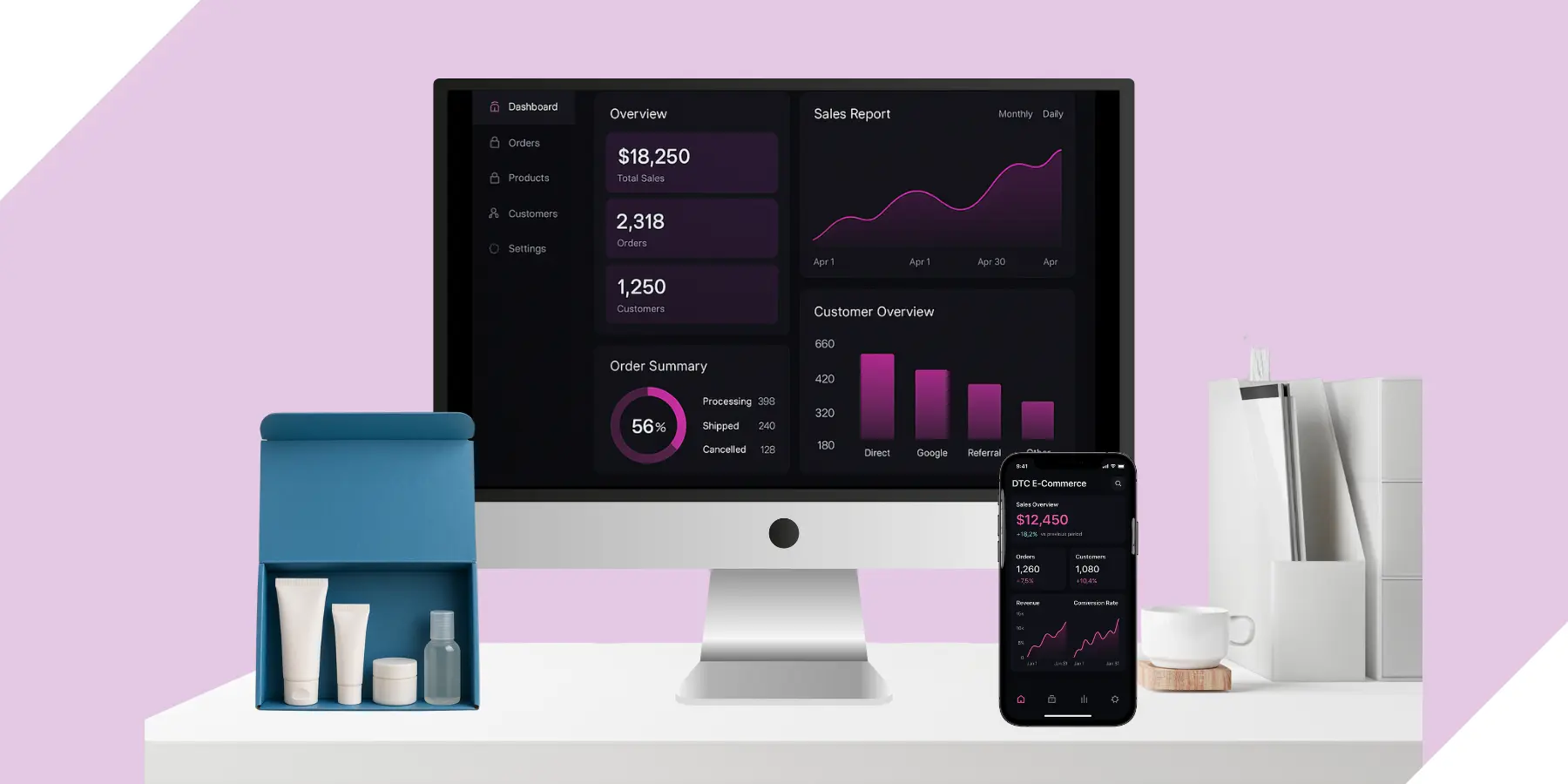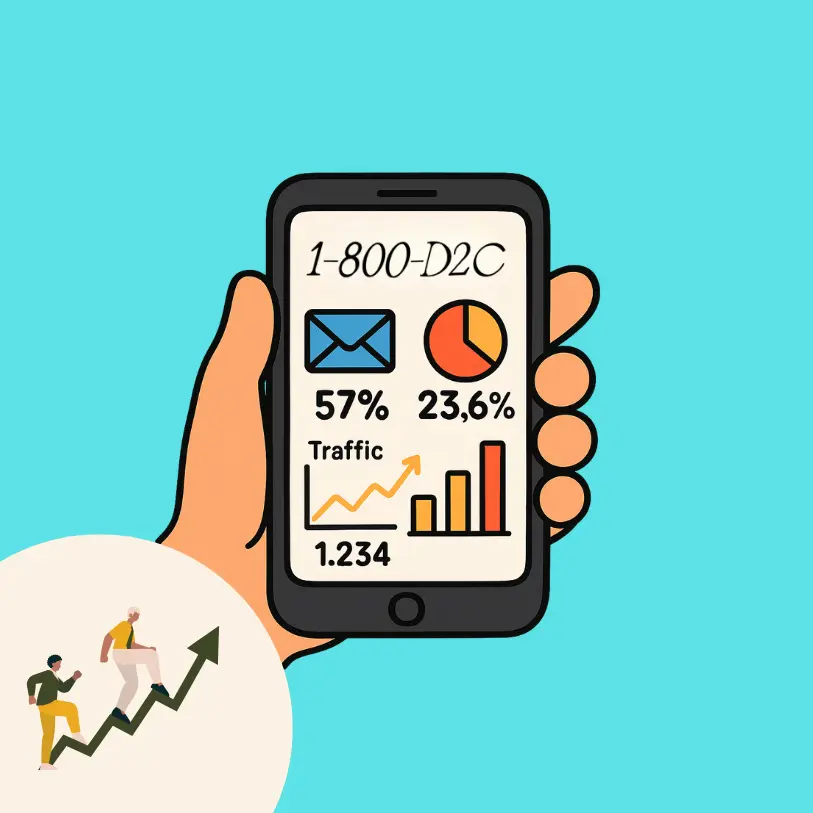Customer experience can make, or quite literally break an e-commerce website. And while every brand seeks to create a website experience that makes the customer want to come back, few have the tools and understanding to do this correctly. A gifting and sampling program, smartly executed, can be the CX wedge that sets your brand apart. It doesn't just fill your customer with a good feeling, but with real business outcomes.
The secret to success here? Treating gifting as methodically as you do customer acquisition math: set clear goals, implement precise targeting, and run airtight operations.
[cta-btn title="Build Your Brand And Become A Member" link="/membership-pricing"]
Why Gifting & Sampling Is the New Frontier in CX
Handing out free product isn’t new. But designing a rewards engine that actually nudges behavior, sparks share-of-voice, and feeds retention cycles? That takes intentionality.
Traditional CX efforts (think faster resolution times or better FAQs) focus on removing user friction. Gifting and sampling, by contrast, create calculated surprise at critical moments in the consumer journey. And unlike blanket promos or loyalty points programs, every dollar in rewards is accountable. Miss the mark here, and you’re not just wasting budget—you’re missing out on lifetime value.
The foundation of any gifting initiative must start with Program Strategy & Goals: defining the outcomes you’re aiming for, clarifying which customer segments you’ll target, and setting success metrics that tie directly back to retention, advocacy, and lifetime value. Without this upfront clarity, even the most creative gifting ideas risk becoming expensive test failures instead of sustainable growth engines.
[single-inline-tool]
Setting the Right Foundation: Documentation and Objectives
If you can’t point to a written plan or established Objectives and Key Results (OKRs) for your gifting program, you’re flying blind and your team is right to be skeptical. Start your new sampling program with clarity by documenting:
- Program objectives: What customer behavior are you trying to shift?
- Change vs. maintenance: Are you rewarding all-star advocates or nudging fence-sitters?
- Transformation or momentum: Is this an innovation play, or are you doubling down on winning segments?
- Budget guardrails: How does reward sizing impact the reach and frequency you’ll achieve?
Your program’s health depends on hitting these with the same rigor as you track Customer Acquisition Cost (CAC) or Customer Lifetime Value (LTV).
Setting Smart Qualification and Standards for Sampling Done Right
Not every buyer or interaction deserves a reward, and treating them all the same can dilute the impact of your program. By setting clear qualification standards upfront, you ensure that only the most relevant customers receive samples, which protects your resources and strengthens your positioning. This focus not only drives higher engagement from the right audience but also creates long-term defensibility for your sampling strategy.
Pre-qualification factors to lock in early:
- Minimum spend thresholds or purchase frequency (Is this a trialist or a whale?)
- Clean data (valid email rates, solid profiles, up-to-date phone numbers)
- Training modules (if staff: completed enablement)
- Contact coverage: is your data representative, or just skewed to vocal minority?
Ensure statistical validity by:
- Seeking at least 100 responses per cohort as a “good” floor, 1,000+ for reliability.
- Noting that below 30 responses, any learning is at best anecdotal.
- Analyzing distribution: Are certain zip codes or demographics overrepresented?
- Setting measurement windows (e.g., 45-day intervals) that let you actually see signal, not just noise.
Designing the Goal Structure for Impact
Goals aren’t just scoreboard material as they also serve as a powerful lever for managing risk. The best sampling programs don’t rely on a single metric but instead combine clear structure, balanced weighting, and thoughtful segmentation to keep incentives both fair and motivating. When designed this way, goals drive impact, protect against waste and misaligned rewards, and create a clear line of sight to ROI measurement.
- SMART framework (Specific, Measurable, Attainable, Relevant, Time-based) so every incentive is justified.
- Composite indexes: Rather than rewarding just NPS, use a blend: repeat purchase, UGC, CSAT (but cap at four KPIs to avoid noise).
- Weighting: Not every metric is scored equally—a 5-star review might “earn” 2× a simple referral.
- Segmentation: One-size rarely fits all. Geo-custom, volume-tiered, or even behavior-based goals keep motivation “just reachable.”
- Tiered achievement: Nobody wants to aim for a moonshot with no mid-level wins. Use levels to keep engagement sticky, not discouraging.
The Reward Structure: Cash, Tangibles, and Experience
A reward is only as powerful as the purpose behind it and the outcomes it creates. Cash can foster dependency or even manipulation, while physical gifts and unique experiences leave a stronger and longer-lasting memory value.
Best-practice considerations:
- Keep cash modest; lean on trophy value (exclusive product, branded swag, event tickets).
- Experiment with reward cycles—a rushed, small monthly pulse vs. a larger quarterly “wow” can reshape perceived value.
- Be mindful: Mega-rewards risk distorting behavior. If the reward outweighs the original purchase’s margin, you’ve just broken the business.
Operations: Appeals, Mulligans, and Gaming Prevention
Any time friction enters the system, the risk of damaging perceptions rises quickly. To protect both trust and performance, a strong operations plan should cover appeals for legitimate errors, thoughtful handling of under performers, and clear safeguards against gaming the program. Building these guardrails upfront ensures fairness while keeping participants engaged for the right reasons and also shows your team how to evaluate new tools without overcomplicating D2C operations. This can reinforce the systems behind the guardrails.
- Appeals process: Make “oops” handling formal, with rules for egregious error (e.g., misattributed survey, system bug) and transparent remedies (survey removal vs. reward credit). Limit the number of appeals to avoid system gaming.
- Mulligans: Resist the urge to drop bottom performers en masse. This muddies targets, demotivates real high-fliers, and complicates your math.
- Prevention of gaming:
- Define and communicate the rules (no survey coaching, no incentivized response, no internal review swaps).
- Use detection tools like duplicate contact monitoring and anomaly flagging—but keep tactics unpublished to stay ahead of bad actors.
- Enforce consistently: start with warnings, but escalate with progressive penalties as required.
10 Under-the-Radar Tactics for Maximizing CX ROI
Don’t just set up your basics. You'll want to push for the micro-optimizations only D2C operators think about:
- Turn samples into micro-conversions: Create “mini-unboxing” moments with inserts, hashtags, and QR codes to transform trial-size into virality engines.
- Use zero-party data for matching: Slider quizzes (“Which scent are you feeling today?”) let you personalize, driving up conversion rates by 3–5×.
- Geo-stack with local micro-influencers: Target hometown nano-creators for better foot traffic and way cheaper CPM than big influencers.
- Surprise-and-delight with support resolutions: Send “CX Wow Packs” post-ticket, cite the solved issue for personal touch.
- Reverse-sample prototypes to top buyers: Beta-test unlaunched products with loyalists via SMS polls to crowdsource product-market fit.
- Bundle warehouse orphans in mystery kits: Pair slow SKUs with best-sellers, creating surprise bundles that earn 12–15% more social chatter.
- Gamify UGC with “pay-it-forward” sampling codes: Unlock a free mini for a friend when the recipient posts a review or story, multiplying reach.
- Track “sample to cart” velocity: The faster a sample leads to cart add, the better your long-term repeat purchase stats.
- Gift inside returns: Salvage revenue by tucking a travel-size inside return shipments—18% will come back and buy full-size.
- Let VIPs preload gift credits: Offer “Give First” wallets—top customers buy discounted codes to gift friends, shifting acquisition spend from cost to profit.
These hacks are structural leverage points brands are quietly using to compound CX value every quarter.
Documentation = Your Program’s Single Source of Truth
High-impact gifting programs run on crystal-clear documentation. Your program manual should include:
- All qualification and reward rules
- Goal structures (plus how they’re measured)
- Behavioral guidelines
- Tactful communication plans (sharing success stories, program changes)
The payoff: less confusion, higher compliance, and a trust-first culture that survives staff turnover and tech stack changes.
D2C Top Players Strategy For Success
Leading brands don’t wing it. These brands lean into:
- Referral programs: 90% use two-sided rewards (think Dropbox’s famous give/get model), often with tiered bonuses to keep the cycle fresh.
- Gamification: Shareable milestones and social proof drive FOMO, especially when combined with both digital and physical rewards.
- Real transparency: Communicate progress, results, and success—nothing motivates like seeing peers win.
Building Programs That Last: Plan, Execute, and Optimize a Unique D2C Sampling Program
The brands that win are the ones that treat gifting and sampling not as a gimmick, but as a disciplined growth engine measured by quantifiable and trackable metrics. When you build with clear strategy, documented objectives, and operational guardrails, every reward becomes an investment that strengthens retention, advocacy, and lifetime value. Approach it with rigor and flexibility, and you’ll transform customer experience from a reactive cost center into one of the most reliable levers of sustainable D2C growth.
[inline-cta title="Discover More With Our Resources" link="/resources"]
Frequently Asked Questions for Gifting & Sampling Programs
Why Is Gifting & Sampling The New Frontier In Customer Experience?
Traditional CX efforts focus on removing user friction, while gifting and sampling create calculated surprise at critical moments in the consumer journey. Unlike blanket promos or loyalty points programs, every dollar in rewards is accountable.
What Should Be Documented When Setting Up A Gifting Program?
Your program manual should include all qualification and reward rules, goal structures plus how they're measured, behavioral guidelines, and tactful communication plans sharing success stories and program changes.
How Do You Ensure Statistical Validity In Sampling Programs?
Seek at least 100 responses per cohort as a good floor, 1,000+ for reliability, noting that below 30 responses any learning is at best anecdotal. Set measurement windows like 45-day intervals that let you actually see signal, not just noise.
What Are The Best Practices For Reward Structure Design?
Keep cash modest and lean on trophy value like exclusive product, branded swag, or event tickets. Be mindful that mega-rewards risk distorting behavior - if the reward outweighs the original purchase's margin, you've just broken the business.





